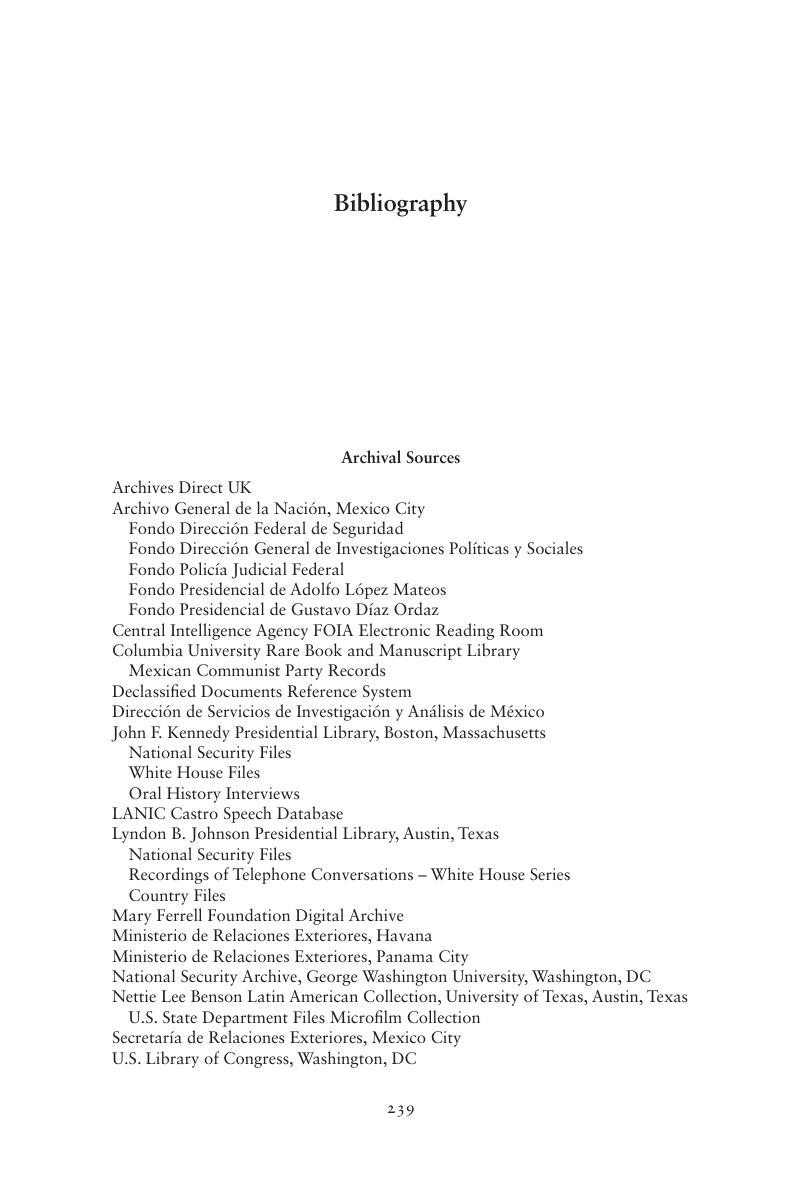Book contents
- Mexico’s Cold War
- Cambridge Studies in US Foreign Relations
- Mexico’s Cold War
- Copyright page
- Dedication
- Contents
- Figures
- Tables
- Book part
- Glossary
- Introduction
- 1 The Institutionalized Revolution
- 2 Responding to the Cuban Revolution
- 3 Mexico’s Cold War Heats Up
- 4 Negotiating Relations with Cuba and the United States
- 5 Insurgent Mexico
- 6 From Cold War to Dirty War
- Conclusion
- Bibliography
- Index
- References
Bibliography
Published online by Cambridge University Press: 05 September 2015
- Mexico’s Cold War
- Cambridge Studies in US Foreign Relations
- Mexico’s Cold War
- Copyright page
- Dedication
- Contents
- Figures
- Tables
- Book part
- Glossary
- Introduction
- 1 The Institutionalized Revolution
- 2 Responding to the Cuban Revolution
- 3 Mexico’s Cold War Heats Up
- 4 Negotiating Relations with Cuba and the United States
- 5 Insurgent Mexico
- 6 From Cold War to Dirty War
- Conclusion
- Bibliography
- Index
- References
Summary

- Type
- Chapter
- Information
- Mexico's Cold WarCuba, the United States, and the Legacy of the Mexican Revolution, pp. 239 - 260Publisher: Cambridge University PressPrint publication year: 2015



